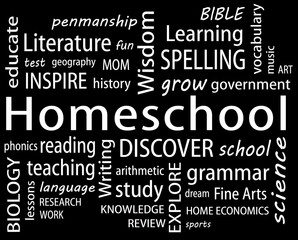
Homeschool Science Curriculum Experiments
Homeschool Science Curriculum Experiments Types of Science Explorations Science in elementary education includes life science, earth science, and physical. The information about how kids learn best is through discovery. Nothing is better for learning than when the student see for himself how things work. Science is exploration through the senses. Kids learn about living and non-living things, plants, and animals, their characteristics. The uniqueness, of these things and fitting them into classifications.
Homeschool Science Curriculum Experiments Themes
The theme a lesson called Seeds, Plants, and Insects is an example of a teacher-guided experience. The teacher shows packets of seed to the kids and asks them what the see. Allow each child a chance to observe by asking an open-ended question. Then place the seeds on a small tray and have the children arrange them by size, color, and shape. Then tell the kids to match them to the different seed packets. Homeschool children can search for and take out the seeds of the fruits and vegetables and use them for their independent explorations.
Homeschool Science Curriculum Experiments Life Science
Life Science for Independent Investigations. Place live plants, and a selection of dehydrated grass, leaves, vines, and bark in the center along with textbooks and charts of plants and insects. Provide a variety of seeds, trays, spoons, and potting soil. Find caterpillars and other insects along with small portions of their natural habitat and food for daily study and then release. Give the kids the opportunity to plant seeds, study the plants and insects, look them up in books, draw them, evaluate and recognize them, and talk about their findings. Earth Science. The study of air and water, sand and soil, day and night, and the seasons. A simple water experiment is called Sink or Float? Give the kids a pan of water, toothpicks, craft sticks, tongue depressors, marbles, coins, and other items. The have them determine whether these items sink or float. As the test each item have them write down there finding in a notebook for later use.
Homeschool Science Curriculum Experiments Physical
Physical Science in early childhood education physical science comprises the study and explanation of the matter, of energy, movement, and change. Theme: Magnets Sample Teacher-Guided Lesson: Magnets different art supplies. Glue two sheets of paper together then ask:"Why the pages adhere together? What else can keep paper together, momentarily or permanently?" Allow the kids time to think, and answer these question. Discuss why the glue holds the papers together
Homeschool Science Curriculum Experiments
Take different selection types of magnets and ask the children to select one to plunge it into a container of mixed thumbtacks and paper clips. Allow time for the kids to explain what happened when the magnet was placed into the cup of metal objects. Many other simple experiments for all ages of the child to use for a discovery session. Using a journal help them write down their observations for use later.
Homeschool Science Curriculum Experiments Summary
Which magnet attracted the most clips? Which attractions were stronger, more dominant?Which were weaker?"rent magnets such as a magnetic wand, a bar magnet, a magnetic marble,and a magnetic button and a box of paper envisage how many clips each magnet will magnetize and then find out how many clips are attracted to their magnets by experimenting with count and write or draw the number of clips attracted to their magnets and then evaluate results and discuss:"Which magnet attracted the most clips?Which magnets were stronger, more dominant?Which were weaker?"








